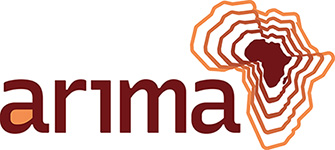 |
Nicolas Bacaër ; Hisashi Inaba ; Ali Moussaoui - Un modèle mathématique pour une transition démographique partielle
arima:6713 - Revue Africaine de Recherche en Informatique et Mathématiques Appliquées, 24 février 2021, Volume 32 - 2019 - 2021 - https://doi.org/10.46298/arima.6713- 1 Unité de modélisation mathématique et informatique des systèmes complexes [Bondy]
- 2 Université de Tokyo [UTokyo]
- 3 The University of Tokyo [UTokyo]
- 4 Tōkyō teikoku daigaku = University of Tokyo [Tokyo] [UTokyo]
- 5 University of Tokyo [Tokyo] = Tōkyō teikoku daigaku [UTokyo]
- 6 Département de Mathematiques [Tlemcen]
- 7 Département de Mathématiques [Tlemcen]
[de]
Wir schlagen ein System gewöhnlicher Differentialgleichungen mit homogenen nichtlinearen Termen des ersten Grades vor, um den demografischen Übergang zu modellieren. Es gibt zwei Altersgruppen und zwei Fruchtbarkeitsstufen. Eine geringe Fruchtbarkeit erstreckt sich durch Mimikry auf Erwachsene mit hoher Fruchtbarkeit. Wenn der Mimikry-Koeffizient zunimmt, überschreitet die Bevölkerung zwei Schwellenwerte. Zwischen diesen beiden Schwellenwerten nimmt die Population mit einer stabilen Mischung der beiden Fertilitätsraten exponentiell zu oder ab. Dieser teilweise demografische Übergang ist in einigen Ländern Afrikas südlich der Sahara zu beobachten.
[en]
We study a mathematical model for the demographic transition. It is a homogeneous differential system of degree one. There are two age groups and two fertility levels. Low fertility extends by mimicry to adults with high fertility. When the mimicry coefficient increases, the system crosses two thresholds between which the population increases or decreases exponentially with a stable mixture of the two fertility rates. This partial demographic transition is reminiscent of the situation in some countries of sub-Saharan Africa.
[fr]
On propose un système d'équations différentielles ordinaires avec des termes non linéaires homogènes de degré un pour modéliser la transition démographique. Il y a deux classes d'âge et deux niveaux de fécondité. La fécondité faible s'étend par mimétisme aux adultes avec une fécondité élevée. Lorsque le coefficient de mimétisme augmente, la population traverse deux seuils. Entre ces deux seuils, la population croît ou décroît exponentiellement avec un mélange stable des deux fécondités. Cette transition démographique partielle s'observe dans certains pays d'Afrique subsaharienne.